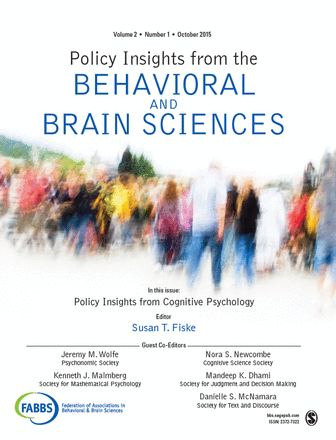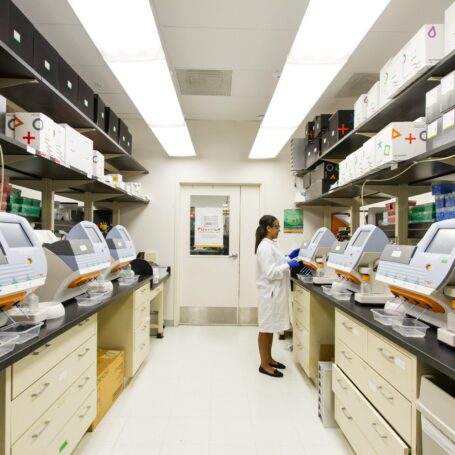 PIBBS
PIBBS Hands-free Technology is Not Enough to Prevent Distracted Driving

Apart from having to look up to read the sign, this message from an interstate highway in Arkansas makes a good point.
Distracted driving is even more prevalent than we thought. Researchers have found that drivers using hands-free devices are nearly as distracted as those using hand-held cell phones. It turns out that it’s not just the physical distraction of operating the phone that causes drivers to lose focus, but also the mental distraction of talking on one. Even when initiated by voice commands such as the iPhone’s Siri feature, mobile phones are more distracting than in-person conversations or listening to music.

The Federation of Associations in Behavioral and Brain Sciences, or FABBS, with SAGE, the parent of Social Science Space, publishes the journal Policy Insights from the Behavioral and Brain Sciences. This annual journal features research findings in the sciences of mind, brain, and behavior that are applicable to nearly every area of public policy. The second issue features 22 articles focused on cognitive psychology focused on topics including education, health, evaluating and mitigating risk, law, and improving society.
These findings, summarized by psychologist David Strayer in a recent article for Policy Insights from the Behavioral & Brain Sciences, suggest that we should be cautious about the ever-growing use of technology in our cars.
Car accidents are the leading cause of accidental injury deaths in the United States, and somewhere between 25 percent and 58 percent of car crashes are caused by driver inattention, according to statistics cited by Strayer. As a result, 14 states have a hands-free law and 44 states ban texting while driving. But while common wisdom suggests those crashes occur because a driver takes his or her eyes off the road, that isn’t necessarily the case. Siri may be lulling us into a false sense of security.
Inattention can take the form of what Strayer refers to as cognitive distraction, or lack of mental focus even while looking at the road, as well as structural inattention, such as fiddling with a cell phone to make a call or looking down to read a text. Some cases of distraction involve only one form while others involve both. “For example, listening to music streamed on [a phone or music device] does not impair driving… However, if the driver takes his or her eyes off the road to select a station or playlist, then this visual/manual interaction is no different than sending a text message or dialing a phone number.” Today’s smartphones, and even vehicles themselves, are equipped with a host of features designed to reduce structural inattention, but these features don’t address cognitive distraction. In fact, they may increase it.
Cognitive distraction impairs what researchers call situational awareness components. Following the acronym SPIDER, those components include visual Scanning, Predicting and anticipating, Identifying threats and objects in the field of view, Deciding what actions are necessary and when, and Executing appropriate Responses. “It should go without saying that we need our whole brain to operate a motor vehicle,” Strayer points out. Different brain regions work together to accomplish all of the skills required, including processing sights and sounds, using motor skills, utilizing memories of how to drive and how to navigate, making good decisions, and reacting quickly to changes in the environment.
Strayer and his colleagues have studied a range of activities commonly performed while driving, to test which cause the most cognitive distraction. Using a driving simulation, they found that activities like listening to the radio or an audiobook did not cause much distraction. Talking with a passenger was somewhat distracting, but not as much as talking on a hands-free cell phone, particularly for adults.
Although “the teen driver/passenger dyad is a distracting combination,” this is not the case for adults. Studies have found that an adult passenger typically acts as “another set of eyes that helped the driver control the vehicle,” (or the passenger at least knows to pause the conversation during a stretch of difficult driving). Alarmingly, though, “activities such as using a speech-to-text system to send and receive short text or email messages produced a surprisingly high level of cognitive distraction.”
In fact, even though participants in the driving simulation study neither touched nor looked at the iPhone while using Siri, two of them crashed.
Drivers tend to rate themselves as safer than others, including when they use mobile technology, studies show. Even those of us who think we are safely using our smartphones or vehicle-embedded voice recognition systems may be fooling ourselves. Either way, there are all of the other drivers on the road to consider. Maybe we should wait until we all have driverless cars before we make mobile technology a major part of our daily commutes.
































































































I agree that distracted driving is a big issue. I do wonder, however, if there are studies that show distracted driving because of a device and how that relates to distracted driving of having other people in the vehicle. Is a device more distracting?
Aside from laws against using devices (and actually enforcing them) I don’t see any reasonable progress toward solving the issue.
I agree!